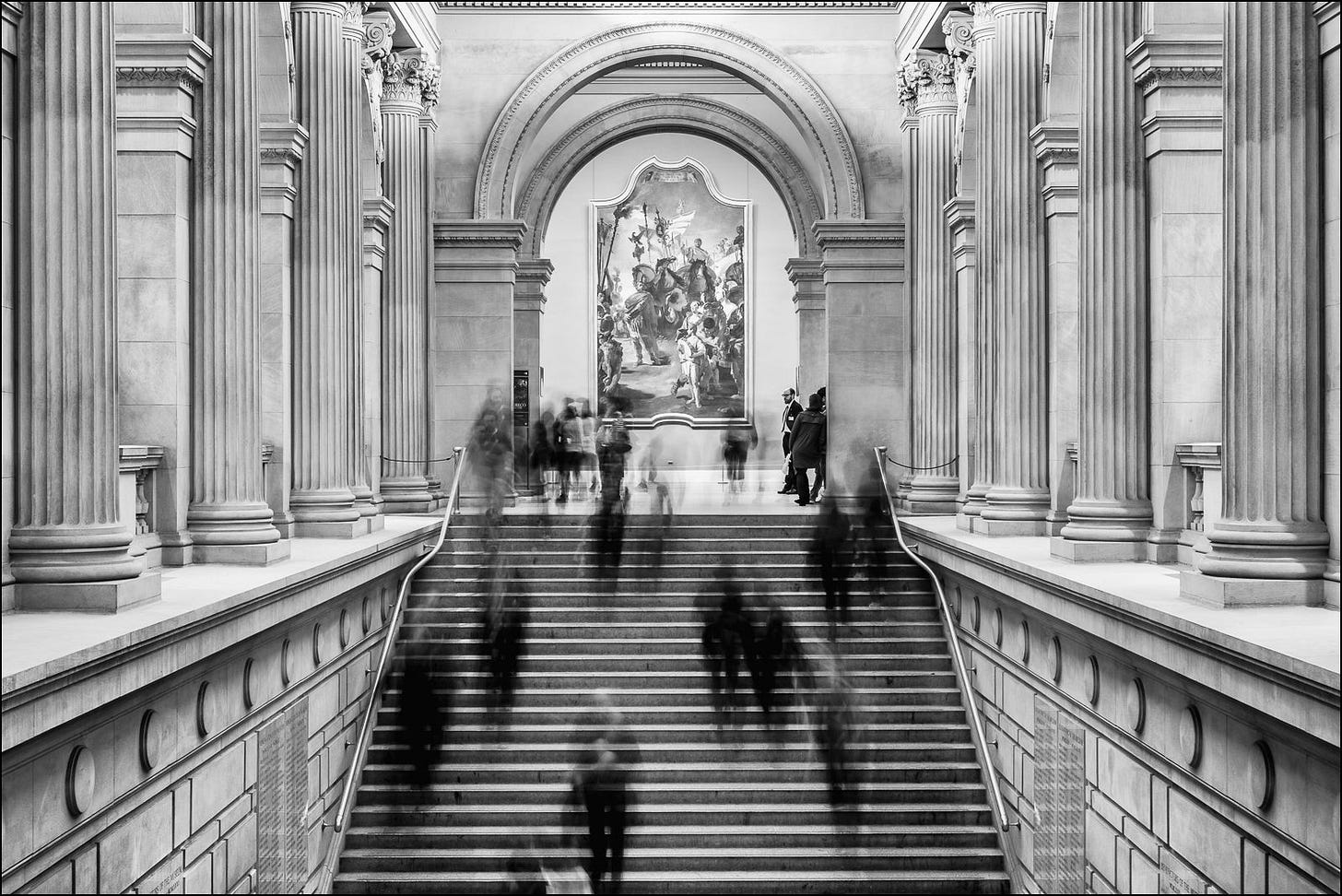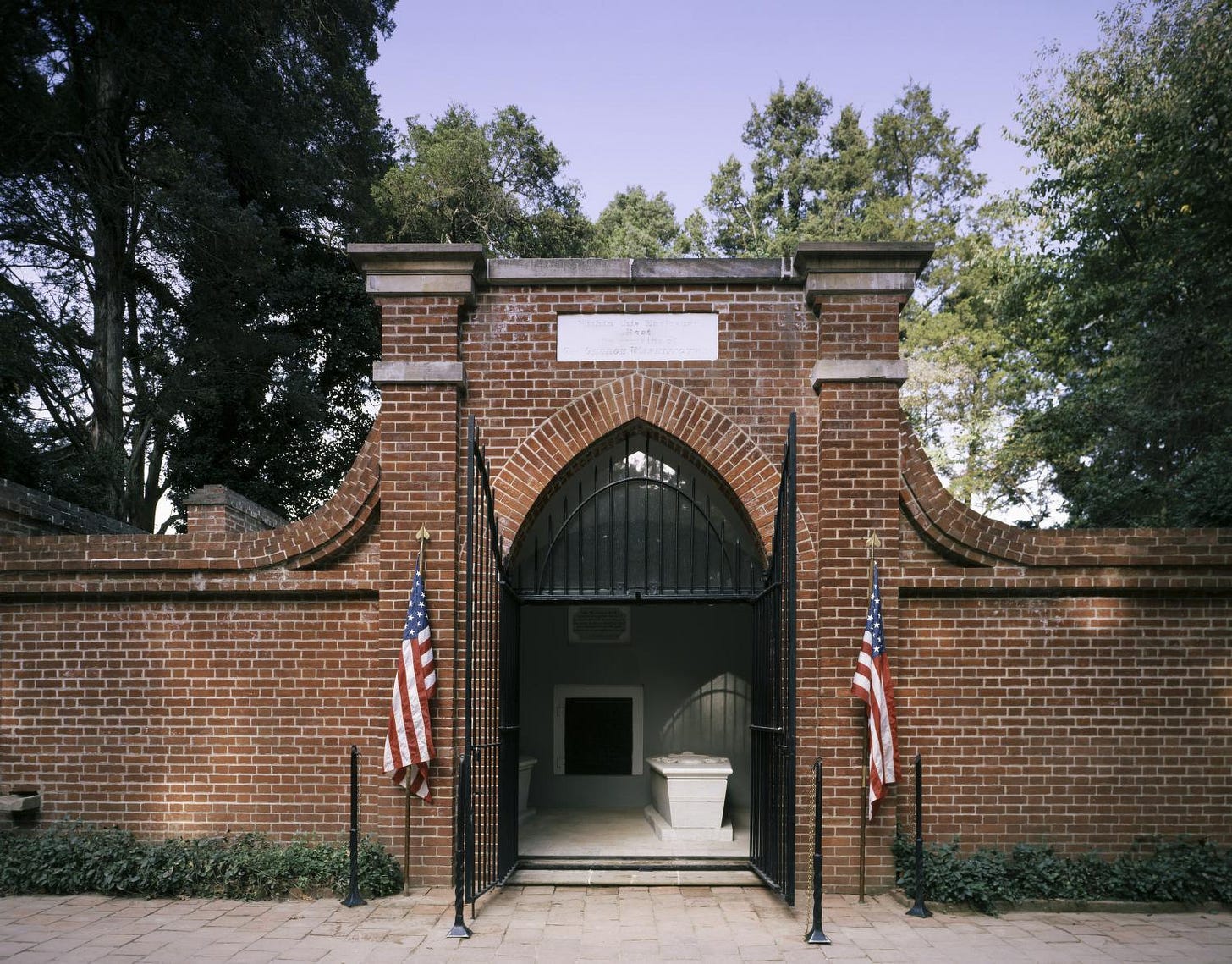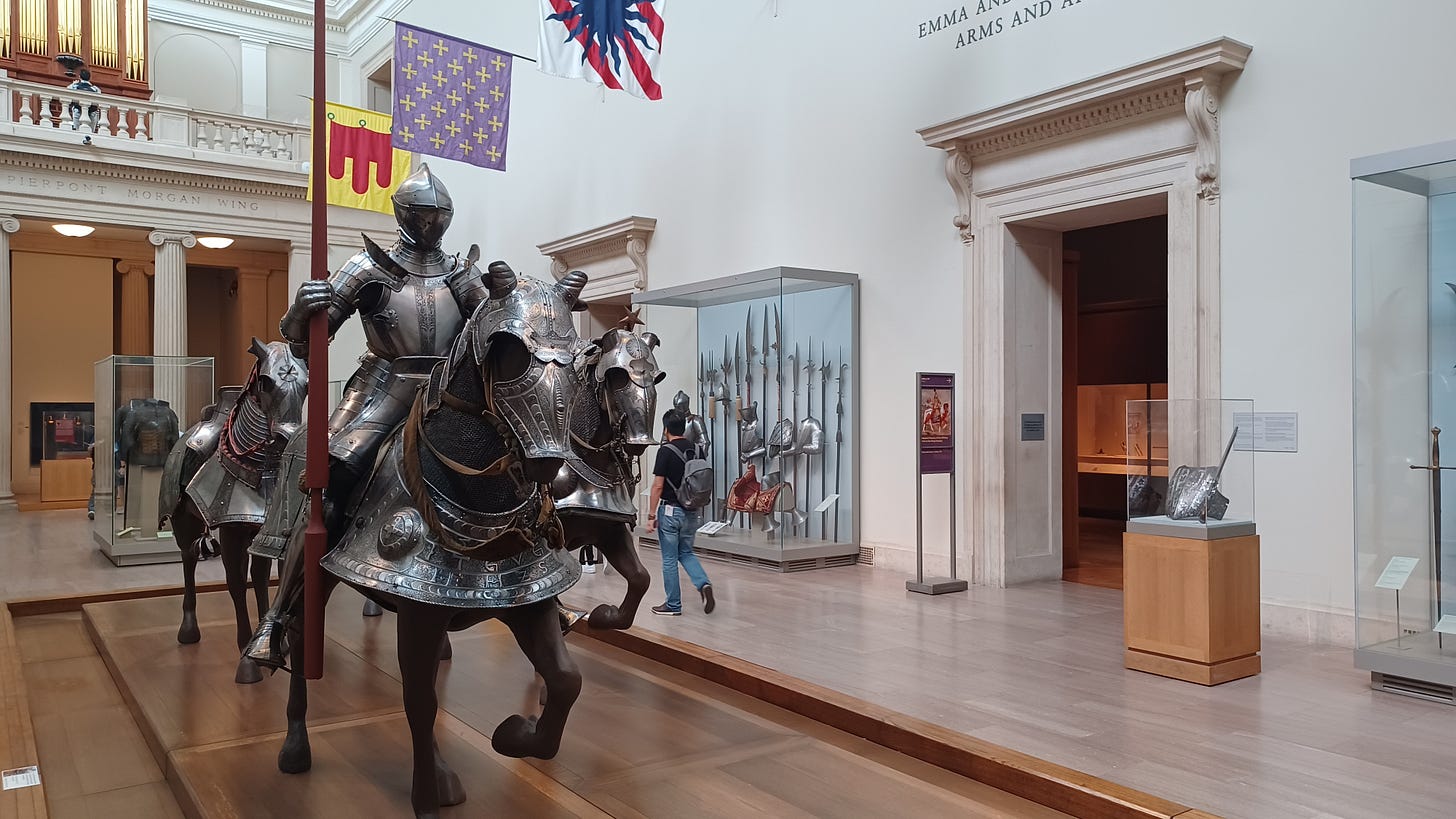You’re reading History’s Confluences, which features historical research, trip reports, book reviews, and public history opinions and analyses.
There was a longer gap than normal between this article and the last one I published. For reasons that will soon become clear, I needed to hold off on posting for a little while until I clarified a few things. Everything is set now, so we’ll be back to our normal posting schedule (about once every two weeks) moving forward.
For ten years, Patrick Bringley worked amid the art and artifacts of the Metropolitan Museum of Art in New York City. His days involved cycling from gallery to gallery, sometimes starting his day among ancient Egyptian artifacts and ending it surrounded by Renaissance portraits. Bringley worked as a security guard, ensuring the safety of the collections and providing assistance to the millions of visitors who pass through the museum each year.
Keeping an eye on priceless art and artifacts has its challenges, but, as Bringley writes in his engaging memoir, All the Beauty in the World: The Metropolitan Museum of Art and Me, it also offered him plenty of time for viewing and reflecting on the masterpieces around him. During his morning shifts in the European Paintings Wing, before the visitors arrived, Bringley recalls, “It was just me and the Rembrandts. Just me and the Botticellis. Just me and these vibrant phantoms I can almost believe are flesh and blood.”1
Neither a tell-all, formal guidebook, or academic study, All the Beauty in the World is a deeply impactful story of how one man found employment, solace, and inspiration at the Met. It’s a rumination on how people engage with museums and the power that these places can have to meet people’s emotional needs. It’s also, in its last few pages, an honest mediation about moving on. As someone who has worked in public-facing roles at several cultural heritage sites, I found the book hit home in ways I didn’t expect and prompted me to reflect on my own career and its similarities and differences to Bringley’s. In a twist I didn’t see coming when I first purchased it, the final chapter of All the Beauty in the World became unexpectedly relevant as 2024 came to a close.
Some spoilers follow
It’s a straightforward job, young man, but we also must not be idiots
Grief prompts Bringley’s journey to the Met. In 2008, his older brother, Tom, passed away from cancer. While mourning, Bringley decides to make a change, quitting his job at The New Yorker and putting in an application “for the most straightforward job I could think of in the most beautiful place I knew.”2 The book chronicles what it is like to be a security guard at the Met, including the training process, the benefits, the coworkers, the employees union, and the daily workflow. As Bringley shadows a long-time guard during his training, she outlines the contours of the role, “It’s a straightforward job, young man, but we also must not be idiots. We keep our eyes peeled. We look around. Like scarecrows, we prevent nuisance… We are not cops except for when idiots ask us to be cops, and thankfully, it isn’t often.”3

All the Beauty in the World primarily focuses on Bringley’s experiences and day-to-day work. Anyone looking for scandals, gossip, or controversy related to the Met is likely to be disappointed. Bringley doesn’t talk about any celebrity visitors, and the famous Met Gala receives only a single mention. Bringley keeps the focus personal, which I think is the right choice. All the Beauty in the World is a memoir of one person’s experiences and the meaning he derived from it, not an exhaustive institutional history of the Met itself.
As a security guard, Bringley’s job required frequent interactions with the visiting public. While part of this involved stopping visitors from accidentally harming the artwork, his role also involved answering questions, providing directions, and otherwise serving as a representative of the Met. Anyone who has worked in a public-facing role at a museum or historic site is sure to get a chuckle from some of the interactions that Bringley describes, such as gently breaking the news to multiple visitors over the years that a certain iconic portrait is not at the Met but at a museum in Europe.
All the Beauty in the World is at its best when Bringley discusses how visitors react to the art and artifacts at the Met and his own thoughts about the collection. Aside from maybe the Met’s curators, he and his fellow security guard see the museum’s artifacts and artwork more than anyone, and it's fascinating to hear his insights and learn about his favorite paintings. Inspecting the many pictures of Jesus in the old master corridors, Bigley notes, “Though I’m not a Christian. I adore the Jesus pictures. Pacing these galleries is like paging through a family photo album of a grim but exceptionally intimate kind…apparently, the old masters channeled everything they had- all of their talent and energy, and all of their wonder and dread- into one story of a short, hard life.”4 Being around all these artworks, over time, helps Bringley manage his grief and grow as a person. “For all the hours I’ve spent in art’s presence. I am grateful,” he reflects.5
Moments in the Museum
Reading All the Beauty in the World reminded me of many moments from my own career in the cultural heritage/public history field. Like Bringley, I fell in love with the work of safeguarding a place’s resources and connecting them to the public. I never intended to have a career in public history, but I enjoyed my first job in the field, a college internship at Harpers Ferry National Historical Park, so much so that I decided to make a go of it. In the first year after graduation, I juggled part-time roles at three sites: Mount Vernon, Decatur House (which is administered by the White House Historical Association), and Harpers Ferry. At the end of that year, I got a job at a historical research and consulting firm, where, over the next nine years, I helped museums and historic sites create new exhibits and plan their strategies for connecting with the public. Even though I now had a full-time job that paid the bills, I kept working at all three locations on an on-call basis on weekends and during special events because I enjoyed the work (or I was crazy, you be the judge)
To be sure, there are several key differences in our respective career paths. While Bringley worked at a museum as a security guard, with art and artifacts from around the world, I primarily worked as a guide at historic sites, most of which had a large outdoor component. While tragedy prompts Bringley’s move to the Met, my motivation to get my first job in the field was pretty mundane. I needed to find a paying gig for the summer, and, as a fan of the national parks, it seemed like a great opportunity to both earn money and put my then-in-progress history degree to use.
My primary task in my public-facing history jobs was historical interpretation: leading tours, conducting demonstrations, and giving formal and impromptu talks about each site’s history. That’s different from Bringley’s main role at the Met, which focused on security, but anyone who works with the public ends up wearing many different hats. Answering visitor questions and providing relevant information was a part of Bringley’s job, just as protecting the historic resources was a part of mine. Even though we worked in different institutions, there was a lot of overlap in the questions we were asked, and I found myself chuckling in recognition as Bringley recounted some of the queries that he’d gotten.
People often seem to think that working at museums and historic sites is some type of magical experience. They’re not completely wrong, but the day-to-day work isn’t very different from most other jobs. I had tasks to complete, metrics and goals to meet, and challenges to overcome (including two separate instances where visitors lost their lunch right in front of me). That said, there were also moments where I was able to step back, take it all in, and feel the “magic” of the place. As Bringley notes, those moments often happen in the morning, before the guests arrive. Unlike Bringley, I didn’t have any Rembrandts or Botticellis at the sites where I worked, but I did have the Bastille Key, John Brown’s Fort, and George Washington’s tomb. It was hard not to get chills while spending time alone with those historic resources.

The other type of magical moment would happen when I knew that I’d helped a visitor gain a deeper understanding or appreciation for the site. Bringley discusses several instances in the book where he helped visitors see the Met’s art and artifacts with a new perspective or provided information that was previously unknown to them. It's hard to describe, but knowing that you’ve helped connect a visitor to a place and that they’ll continue to think about it after they leave is an immensely gratifying feeling.
Moving on from my “Met”
Despite his love for the job, Bringley eventually decides it’s time to move on. After nearly ten years, he starts to think about what’s there for him outside of the Met’s walls. There’s no controversy, no moment where the perfect job turns into a nightmare, just a dawning realization that he doesn’t want to be in the role forever. As he writes, “I continue to find pleasure standing on post,” but “these days, my thoughts fly outside the museum’s walls, causing my mind and limbs to twitch with restlessness.”6 Family commitments and job schedules also weigh on his mind. Late shifts mean that “When I get home exhausted at about 10:45 on Saturday nights, I generally find a wife and two children asleep together in my bed. It’s sweet, but I’m tired of it.”7 Eventually, he decides to wrap up his time as a security guard for a new job as a guide at a tour company.
Reading those sections, it was hard not to think about when I said farewell to the historic sites I worked at. While I enjoyed working at all three organizations, I eventually left each one. In late 2018, as I prepared to start my master’s degree, I said farewell to the Harpers Ferry and Decatur House jobs. I figured that between graduate school, a full-time job, and several part-time gigs, something had to give. I left Mount Vernon at the end 2022. Personal commitments, a new role on the board of the Alexandria Historical Society, and new responsibilities at my full-time job were taking up more and more of my time, and I knew I had to step away from something. It felt strange to no longer be interacting with visitors, but my history consulting job meant that I was still very much a part of the public history/cultural heritage world. At the start of 2024, I was coming up on ten years in the field and thought that the rest of my career would be in public history…
…Until, like Bringley, I began to wonder what else was out there. As luck would have it, while rereading All the Beauty in the World for this article, I accepted a research position at another organization and left the job at the history consulting firm. For the first time in a decade, I’m not employed in public history.
But before anyone cancels their History’s Confluences subscription, I should clarify that I’m still very much involved in the public history world. I continue to serve on the board of the Alexandria Historical Society, and I remain a commissioner on the Alexandria Archaeological Commission. I have a couple of personal historical research and interpretation projects in the pipeline, and I may do some public history consulting work in the future. I also have a long list of topics I want to tackle on History’s Confluences. It’s a new chapter for me, but, rest assured, this publication isn’t going anywhere.
More than Met my expectations
All the Beauty in the World is a deeply personal, relevant, and engaging book. It’s worth a read whether you’re a frequent Met visitor or if you’ve never stepped foot in a museum in your life. For anyone picking it up right before a trip to the Met, I recommend skipping till the end. Bringley’s advice on how to approach the Met’s collection, which can be applied at any museum or historic site, is essential reading for both newbies and seasoned visitors.
The world doesn’t stand still. Life goes on, and we must go with it. All the Beauty in the World shows that it is okay to move on to the next adventure, but it also reminds us that when our world changes and the future looks uncertain, there’s a power to art and museums. Bringley writes, “Art often derives from those moments when we would wish the world to stand still. We perceive something so beautiful or true or majestic or sad that we can’t simply take it in stride. Artists create records of transitory moments appearing to stop their clocks.”8 Visiting a museum or historic site offers a chance to step back, reflect, and gain perspective, enabling us to better engage with both our inner lives and the outside world.9 In the new year, I won’t be going to any historic sites and museums as an employee or consultant, but I’m looking forward to exploring them as a visitor. And after rereading Bringley’s book, I think another visit to the Met is in order.
To all my subscribers and readers, thank you for your support, and happy new year.
All views expressed in this article are my own and do not represent the views of any of my employers, present or past.
Patrick Bringley, All the Beauty in the World: The Metropolitan Museum of Art and Me, (New York: Simon & Schuster, 2023), pg. 15.
Ibid., pg. 12.
Ibd., pg. 3.
Ibid., pg. 21.
Ibid., 178.
Ibid., pg. 168.
Ibid., pg. 168.
Ibid., pg. 178.
To be clear, I’m not saying that the experience of visiting a museum or historic site is always comfortable or relaxing. Many sites deal with difficult or upsetting content that may leave visitors feeling upset or drained (I’ve personally given plenty of tours that dealt with violence, death, slavery, and other difficult topics). There’s also the very real issue of museums and historic sites continuing to holding items in their collections that should be repatriated, which Bringley does discuss in his book. My point here is that Bringley’s book shows there’s a power to engaging with the human story in all its complexities and contradictions at museums and historic sites. This power should not be casually disregarded.




